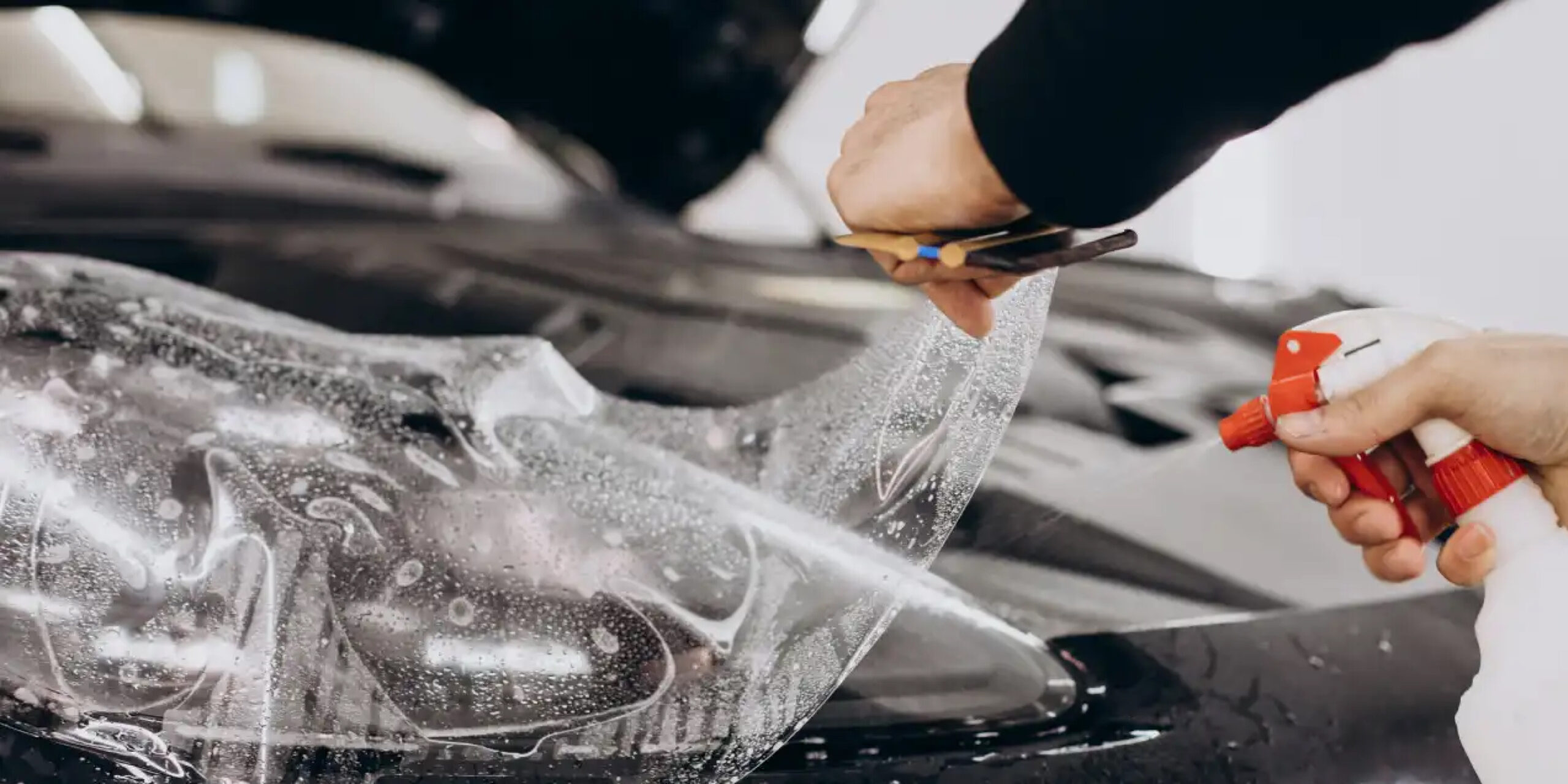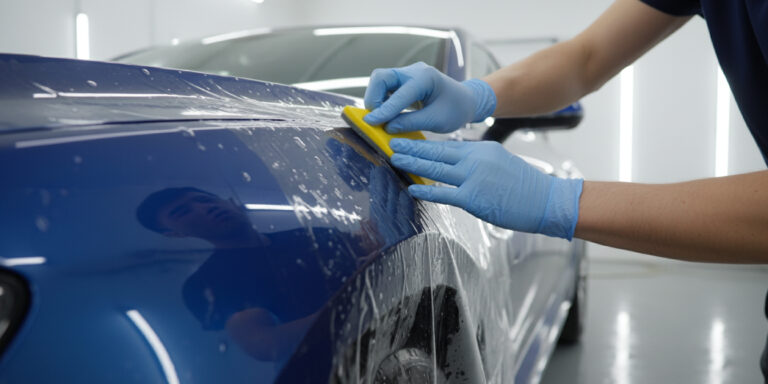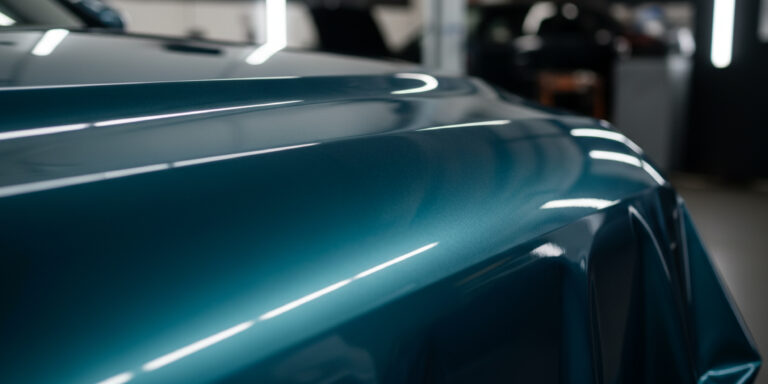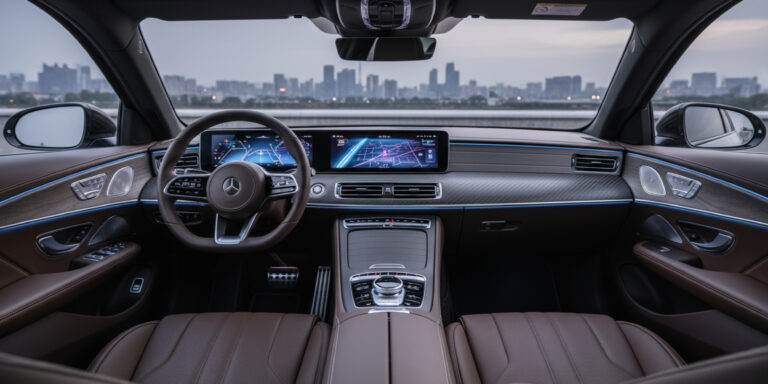A common unspoken worry that comes with the thrill of driving a new car is the inevitable stains and scratches that appear almost immediately. Paint protection film is an effective shield that protects your vehicle’s paint and keeps it looking new for longer. A high-quality film protects against minor abrasions, UV radiation, and the wear and tear of daily driving.
Protective film for paint has transformed car care. It provides car owners with a nearly invisible barrier that helps them maintain a perfect appearance. Modern PPF is composed of high-performance thermoplastic urethane, which is both flexible and durable.
The benefits of paint protection film have increased its popularity. It addresses the genuine needs of car owners everywhere. Earlier, the only option to protect a vehicle’s paint was to wax it frequently or use ceramic coatings introduced recently. These methods are useful, but they do not protect against physical damage as PPF.
Versatility is another significant benefit. PPF can be applied to the entire vehicle or specifically to high-impact areas such as the hood and fenders. You can customize your protection as per your budget and driving habits.
In contrast to vinyl wraps that change your vehicle’s look, PPF offers a clear, nearly invisible solution that preserves your car’s original appearance. It enhances the car’s natural paint gloss while protecting it from damage. If you prefer matte finishes, you can choose a specialized matte PPF that offers your car a distinctive look.
This blog explores everything you need to know about paint protection film. Continue reading to learn how this protective film can help you extend the life of your vehicle, improve its appearance, and make each drive a little less stressful.
Benefits of Choosing the Right Installer for Your Paint Protection Film
Investing in paint protection film (PPF) for your car is a smart choice. Choosing the right installer is equally important. Bubbles, misaligned edges, peeling corners, and even paint damage to your car can result from careless installation, regardless of how high-quality the material is. That’s why it’s important to trust your car to a skilled, experienced professional who knows the product and how to use it perfectly. Contact Colibri Car Styling for more details.
Professional Finish Without Bubbles or Seams
The visual quality of the finish is one of the most obvious differences between an average and an expert installation. A skilled installer ensures that the paint protection film is applied accurately, with no air bubbles, wrinkles, or dust particles trapped below. With the edges correctly aligned or wrapped, the film is almost invisible. Badly done PPF jobs frequently result in visible seams, irregular texture, or cracked corners that peel within weeks.
Proper Surface Preparation for Long-Term Adhesion
Installing a paint protection film is about more than just applying it to your car. The surface of your car has to be prepared thoroughly. Your car has to be thoroughly washed and decontaminated to remove swirl marks or blemishes. Sometimes, minor paint correction may be required. A good installer will never skip this step because they understand that PPF attaches best to a clean, smooth surface.
Clean, Controlled Installation Environment
For optimal results, PPF installation should take place in a clean, climate-controlled setting to ensure that dust and humidity do not affect adhesion. Professional studios have the proper tools and conditions to ensure a clean and long-lasting application. This minimizes the risk of contamination and ensures flawless and long-lasting results.
Common Misconceptions About Paint Protection Film
Paint protection film is widely regarded as one of the best options available today for protecting your vehicle’s exterior. However, there is still a lot of misunderstanding about it. Many car owners are misled by social media rumours to outdated advice. These can influence their decision to invest in PPF.
Myth: Paint Protection Film Will Ruin My Car’s Paint Over Time
This is one of the most common myths about paint protection film. PPF protects your vehicle’s paint. High-quality films make use of advanced paint-safe adhesives. This means that they adhere securely without causing damage to the underlying surface. PPF can help protect your car’s original paint from damaging UV rays, oxidation, and road debris when applied properly by a qualified professional.
However, problems do occur. They are almost always the result of poor installation or unsuitable paint conditions. Problems may arise if the film is applied over a poor paint job, removed improperly with sharp tools, or installed by someone who lacks proper training and equipment. You can avoid these risks by hiring a trained professional. Always ensure your car’s paint is in good condition before applying PPF.
Myth: You Can Easily Install PPF Yourself
While DIY PPF kits are available in the market, professional installation is essential for the best results. The process of applying paint protection film involves more than just peeling and sticking. Precision cutting and expert handling are required to avoid bubbles or alignment errors during application.
While taking the DIY route might seem like a budget-friendly option, it often leads to noticeable imperfections or even harm to your paintwork, which can end up being expensive to fix. If you want a flawless finish and long-lasting durability, hire a certified installer who has the necessary experience and tools.
Maintenance Tips for PPF-Treated Cars
Applying paint protection film to your vehicle is a wise investment for maintaining its appearance and resale value. However, while PPF significantly reduces the need for extensive paint care, it is not completely maintenance-free. Regular and proper care is necessary to get the most out of your protective film and keep it looking its best for years to come.
Wait Before Washing After Installation
After you’ve applied the paint protection film to your vehicle, it takes time to fully adhere to the surface. Avoid washing your car for at least 5 to 7 days after installation. This allows the film to set while preventing moisture or pressure from breaking the bond between the film and the paint. If you notice small bubbles during this time, don’t worry. These usually disappear as the fixative settles.
Wash Your Car Regularly, But Gently
Keeping your car clean is one of the most effective ways to ensure the paint protection film remains clear and effective. However, you should be gentle and careful when you wash your car so that you don’t damage the top layer of the film. Always use a pH-balanced, chemical-free car shampoo because harsh detergents can damage the protective coating. Wash your car in the shade or during cooler times of the day to avoid rapid drying and unsightly water spots. While automatic car washes may seem convenient, those with spinning brushes can lift the edges of the film or cause fine scratches on its surface.
Conclusion
Vehicles in today’s pollution-filled world are exposed to many risks, including UV rays, acid rain, gravel, and road grime. Paint protection film has emerged as a practical and effective way to keep your car looking newer for longer. PPF provides a reliable shield against scratches, stains, and environmental wear. You can maintain the aesthetic appeal and resale value of your car, regardless of whether you drive a luxury sedan or a standard passenger car.
PPF isn’t just a cosmetic upgrade. It is a long-term investment for your vehicle. With proper care and professional installation, paint protection film can provide years of worry-free protection. You can maintain your car’s original paint in pristine condition.
Ultimately, choosing PPF is about more than just protecting the paint. It’s about driving with confidence, knowing your vehicle is safe from life’s little surprises on the road.





